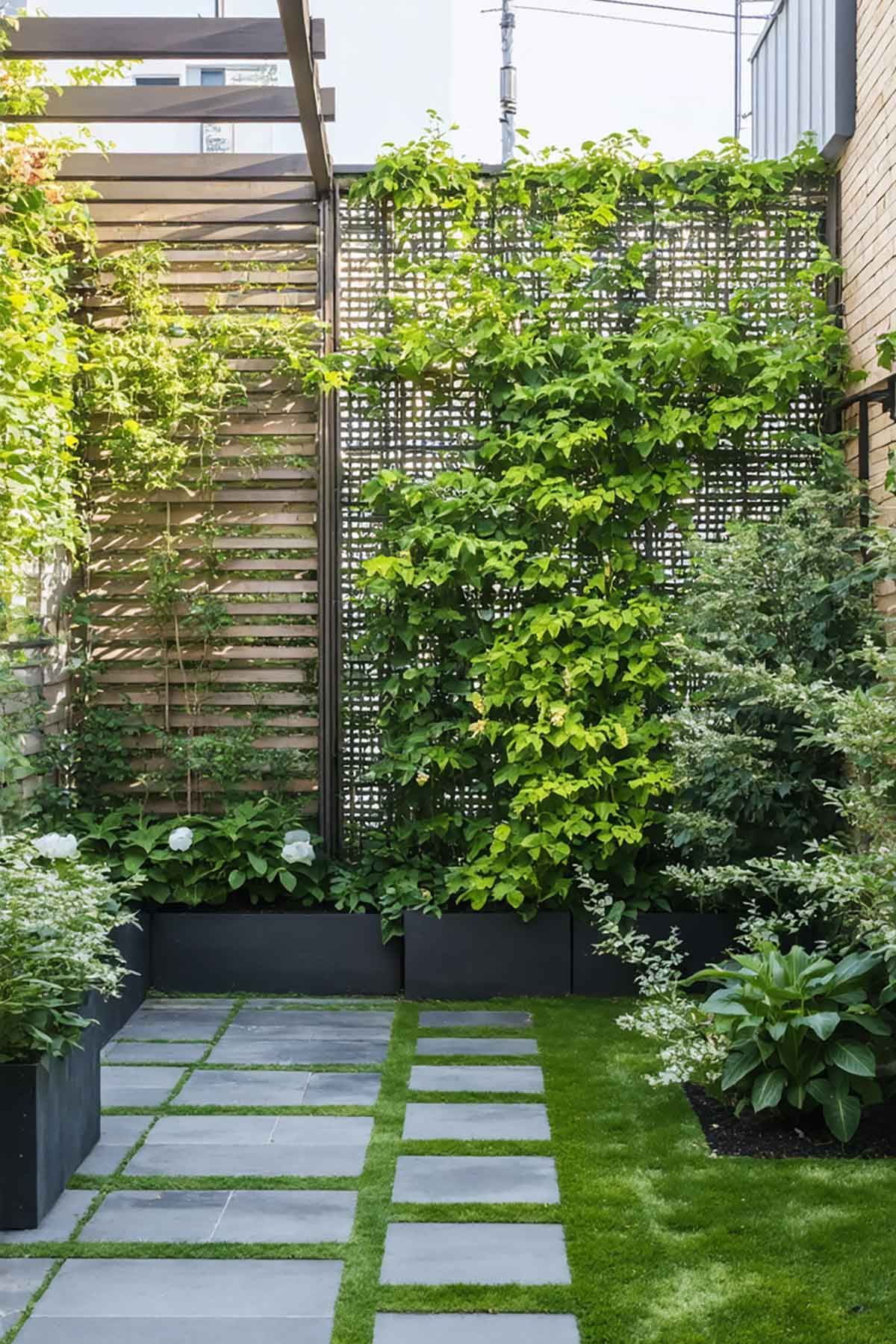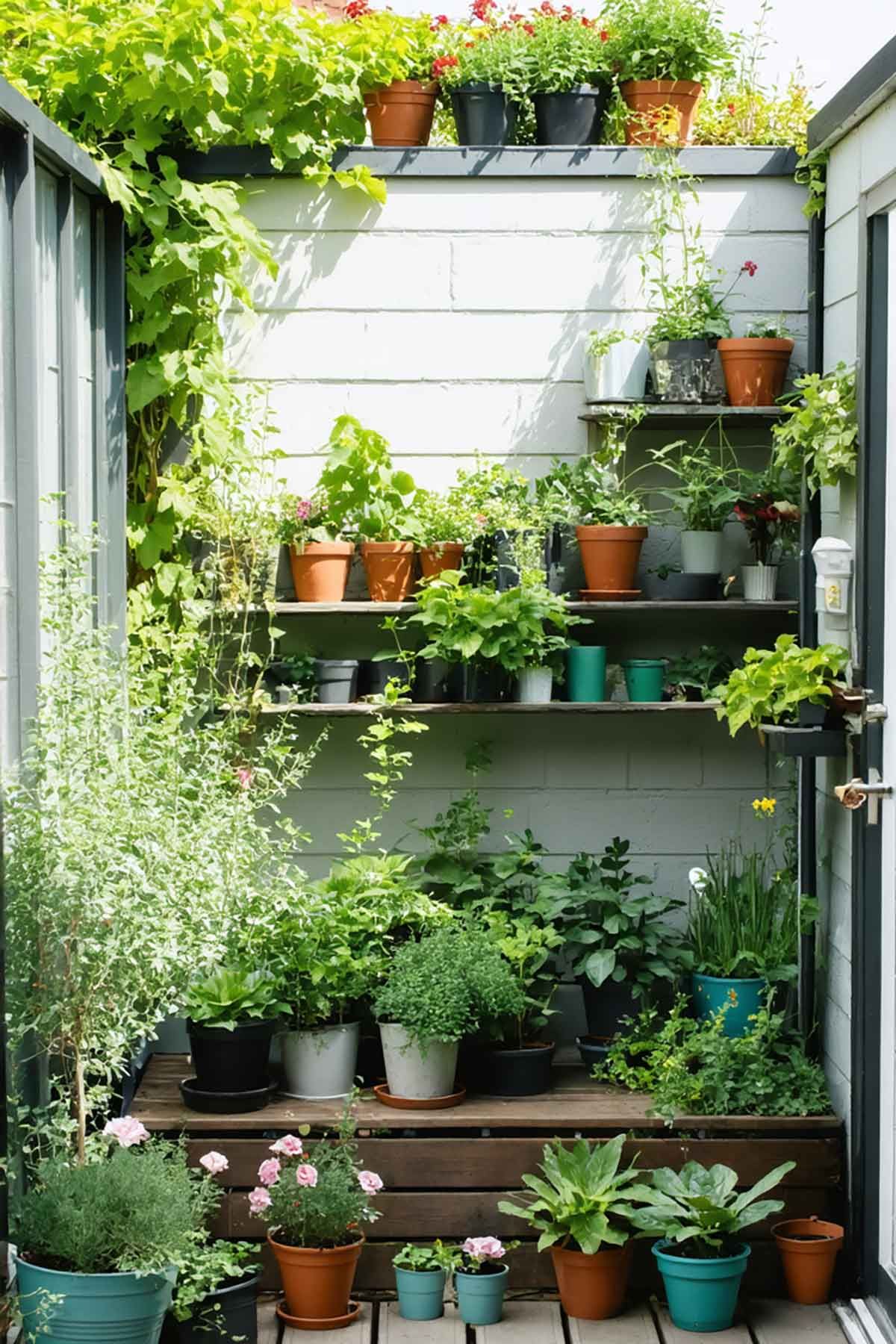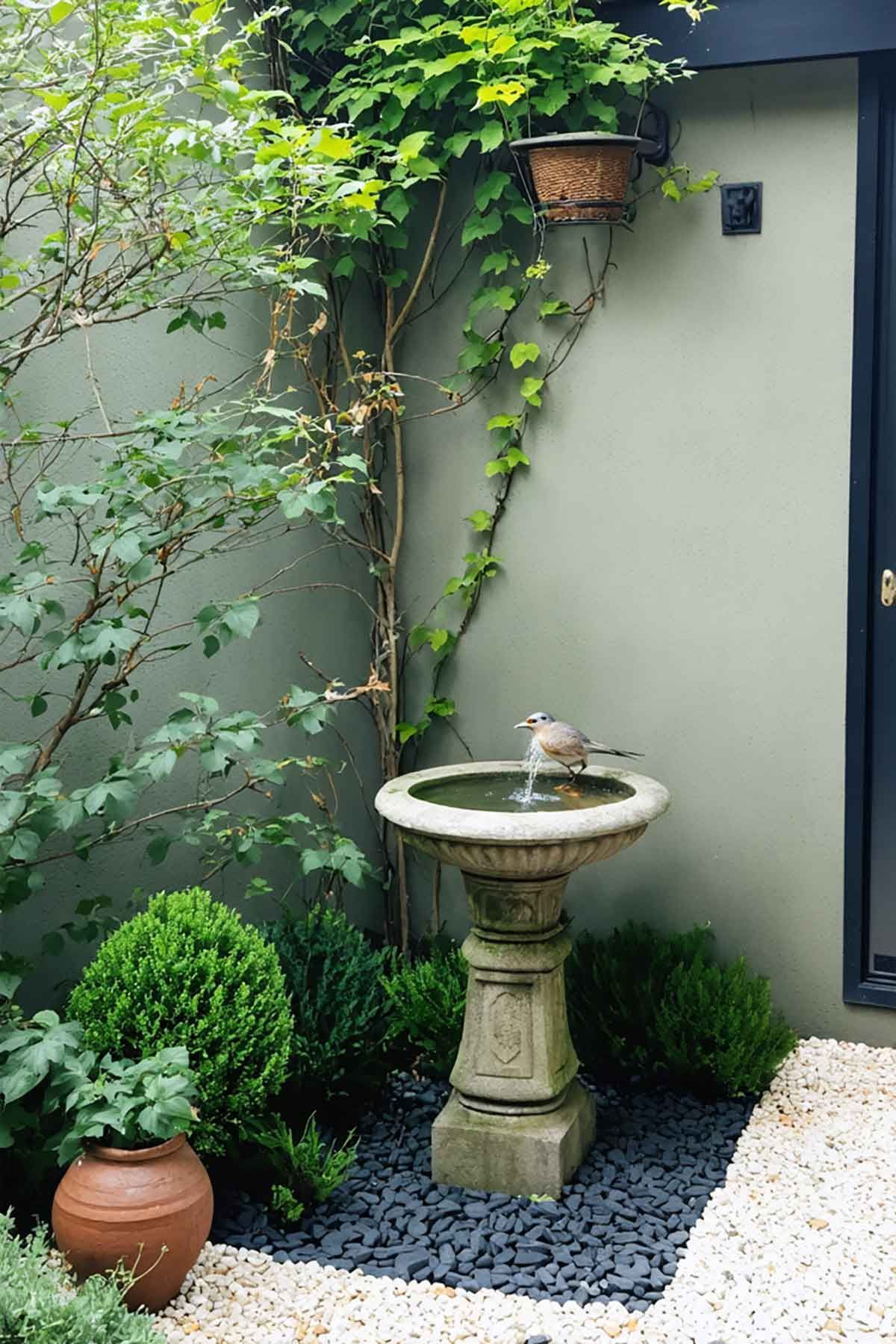Urban Oasis: Top 5 Garden Layouts for City Dwellers
Layout Your Urban Garden Maximising Space and Usability
Ready to turn your cramped city space into a blooming paradise? Would you like to transform your concrete jungle into a lush urban garden? I’m chuffed to share my top tips with you. Whether you’re in bustling Sydney or laid-back Brisbane, these city garden designs will help you create your own slice of green heaven.
Did you know that exposure to green spaces can slash stress levels by up to 30%? That’s right, urban gardens aren’t just pretty – they’re good for your noggin too! From tiny balconies to neglected courtyards, I’ve seen it all. And let me tell you, with the right layout, even a 1,600 square foot yard can feel like a sprawling oasis.
In this guide, we’ll explore five ripper garden layouts that’ll make the most of your limited space. We’ll chat about clever tricks like using vertical space and container gardening – a favourite among 80% of city gardeners. So grab a cuppa, and let’s dive into the world of urban gardening, Aussie style!
Understanding Urban Gardening Challenges
Starting a garden in the city has its own set of challenges. I’ve faced these myself while designing gardens for small spaces. Let’s look at the main hurdles you’ll meet when making your urban garden.
Space Limitations in City Environments
In cities, every inch is precious. About 70% of city gardeners use raised beds or containers because of soil scarcity. To make the most of space, 50% turn to vertical gardening.
This method can boost outdoor space by up to 30%. It works well with features like benches and raised beds.
Light and Shade Considerations
Tall buildings can block sunlight, making it a rare resource. When designing your garden, it’s key to understand sun patterns. Choose shade-tolerant plants for dark spots and light-loving ones for sunny areas.
Also, 60% of urban dwellers face privacy issues. Use plants that act as screens to help with this.
Urban Microclimate Effects
Cities can be up to 5°F warmer than rural areas. This heat can be both a help and a hindrance for small block gardens. It lets you grow exotic plants but means you’ll need to water more.
That’s why 75% of urban gardeners prefer big containers . They help reduce watering and upkeep.
| Urban Gardening Factor | Percentage |
|---|---|
| Use of raised beds/containers | 70% |
| Vertical gardening techniques | 50% |
| Privacy concerns | 60% |
| Preference for large containers | 75% |
Essential Elements of City Garden Design
Creating an urban garden layout needs careful planning and smart space use. City folks face special challenges. But, with the right strategy, you can turn even the smallest outdoor spot into a green paradise.
Creating Privacy Screens
Privacy is vital in cities. I’ve found hedges or tall plants like bamboo are perfect. They block unwanted views and add greenery. For a fast solution, hang plants or trellises with climbing vines.
Incorporating Vertical Space
Vertical gardening is a big help for small areas. Use wall-mounted planters, hanging baskets, and tiered shelves to grow more. I’m a fan of espaliered fruit trees on walls – they save space and give tasty fruit!
Balancing Hardscape and Greenery
Finding the right mix of paved areas and plants is key. Too much concrete makes a garden feel cold, while too many plants can make it hard to move around. I aim for a 60/40 greenery-to-hardscape ratio. This lets you have comfy spots while keeping the garden lush.
| Element | Purpose | Examples |
|---|---|---|
| Privacy Screens | Create seclusion | Hedges, bamboo, trellises |
| Vertical Gardens | Maximize space | Wall planters, hanging baskets |
| Hardscape | Functional areas | Pavers, decking, seating |
| Greenery | Aesthetic appeal | Plants, flowers, shrubs |
A great urban garden mixes function with beauty. By using these elements, you’ll make a space that’s both useful and a pleasure to be in.

Top 5 Garden Layouts for Urban Homes
Urban gardens face unique challenges, but with creative solutions, city dwellers can transform limited spaces into lush retreats. Let’s explore the top 5 garden layouts for urban homes that maximize greenery and functionality.
Container Garden Configuration
Container gardens are versatile and perfect for renters or those with minimal space. A study shows that 30% of urban gardeners struggle with limited space, making containers an ideal solution. Mix and match pots of various sizes to create depth and interest. Try grouping herbs together for a mini kitchen garden – it can increase home-cooked meal frequency by 50%!
Vertical Wall Gardens
Vertical gardens make use of unused wall space, bringing life to bare surfaces. These gardens are popular in cities, where horizontal space is limited. Incorporate a variety of plants, from succulents to trailing vines, to create a living tapestry that adds visual interest and improves air quality.
Courtyard Garden Design
Courtyard gardens offer a private oasis in the heart of the city. For an 8×8 meter space, focus on creating distinct zones for relaxation and entertainment. Incorporate a water feature for tranquility and use raised beds to improve drainage and increase vegetable yields by up to 20%.
Rooftop Garden Layout
Rooftop gardens transform unused spaces into green havens. When designing a rooftop garden, consider weight restrictions and wind exposure. Use lightweight containers and wind-resistant plants. Incorporate seating areas and shade structures to create a comfortable outdoor living space with stunning city views.
Pocket Garden Arrangement
Even the smallest nooks can become green spaces with pocket gardens. Utilize corner spaces or narrow strips along fences. Plant native wildflowers to increase local pollinator populations by up to 60%. For north-facing gardens in Australia, take advantage of full sun exposure to grow a variety of plants.
| Garden Layout | Key Feature | Best For |
|---|---|---|
| Container Garden | Portability | Renters, Small Spaces |
| Vertical Wall Garden | Space Efficiency | Limited Ground Space |
| Courtyard Garden | Privacy | Enclosed Spaces |
| Rooftop Garden | Views | Unutilized Roof Areas |
| Pocket Garden | Versatility | Awkward Spaces |
Maximizing Small Garden Spaces
Living in the city often means having little outdoor space. But, you can still make a beautiful garden. In Australia’s cities, where space is limited, smart ideas can turn small areas into green oases.
Vertical gardening changes the game for small spaces. You can grow plants up walls, fences, and trellises. Bambusa textilis ‘Gracilis’, a bamboo, can grow 6m tall in 18 months. It’s great for privacy screens. Living walls save space and look amazing.
Choosing the right furniture is key for small gardens. Built-in seating saves space, and foldable items offer flexibility. Corner seating is a smart choice to use space well. In small gardens, less is often better.
- Use mirrors to create illusions of space
- Opt for one large potted plant over multiple small ones
- Choose native groundcover plants like native violet for low maintenance
- Implement self-watering pots to reduce maintenance
Lighting can make small gardens look bigger. Solar lights, lanterns, and string lights add ambiance. Spotlights and uplighting make the space feel deeper. Light-colored fencing and furniture also make the space seem larger and brighter.
Small gardens don’t have to lack variety. Succession planting and intercropping ensure a constant harvest. Hardy shrubs like Miss Muffet (Pittosporum) are beautiful all year and tough against Australian weather. With careful planning, even the smallest space can become a vibrant garden oasis.

Renting? Consider potted plants you can take with you when you leave. Pots are heaps cheaper than they were just a decade ago and there is such a wide range of colours and styles you should be able to find something that suits your style.
Also, 80% of garden designers suggest adding plants between the house and garden room. This improves looks and acts as a natural divider. By using these tips, you can turn a small outdoor area into a versatile oasis that feels bigger.
Whatever you do choose plants that suit both your climate and your gardening style . Don’t by flowers or plants that require a lot of maintenance just because you like the look of them. That’s fine if you are doing to do the work, but if you want an all round green space with not heaps of effort, considering your plant choices carefully will really matter.

Plant Selection for Urban Gardens
Choosing the right plants for your city garden is key. In urban areas, each plant must be worth its space. Let’s look at some top picks for your Aussie urban oasis.
Shade-Tolerant Species
City gardens often face shade due to tall buildings. Ferns, hostas, and begonias are great for these spots. They bring lush greenery without needing full sun.
Container-Friendly Plants
Container gardening is a hit in cities, with 75% of renters loving it. Herbs like basil and mint, and compact veggies like cherry tomatoes and lettuce, are perfect for pots. Dwarf citrus trees are also great, yielding fruit up to four times a year!
Year-Round Interest Plants
To keep your garden lively all year, choose plants that bloom long. Rosa ‘Flower Carpet Amber’ blooms for about 8 months, while Rosa ‘Lady of Shalott’ flowers from June to October. Evergreen shrubs and climbers are also popular for constant greenery.
Urban gardens can be up to 10°F warmer than outside, making them ideal for Mediterranean plants. With the right plants, your city garden can thrive all year.
Creating Garden Rooms in Limited Space
Urban garden layouts bring unique challenges but also chances for creativity. Even the smallest outdoor spaces can become multi-functional wonders. Let’s see how to make distinct garden rooms in tight spots.
Using Structural Elements
Structural elements are key in defining spaces. Trellises, screens, and archways can divide areas without losing space. Many homeowners, 60%, like garden rooms that feel like separate places, not just home extensions.
Implementing Curves and Lines
Curves and lines can make your garden seem bigger. Curving flower beds guide you through, creating areas without clear boundaries. This adds charm and makes the space feel larger.
“The soft lines of the design add to the character and romance of the space. Curving flower bed ideas lead you through the garden notionally separating areas without obvious division,” explains Jo, a garden designer.
Defining Distinct Areas
Designing distinct areas in small gardens is all about smart design. You can create cozy reading spots, outdoor dining areas, or even a small office. 30% of garden rooms are for both leisure and work, showing their flexibility.

Water Features in Urban Gardens
Water features are a game-changer in city garden design . They add magic to urban spaces, creating a soothing oasis. From compact fountains to cleverly designed ponds, there’s a water element for every garden size.
In Australia, where native wildlife is precious, water features play a crucial role. They provide habitats for local species, including frogs, birds, and even koalas in regional areas. A simple bird bath, replaced every 2-4 days, can become a lifeline for urban wildlife.
For those with more space, koi ponds add luxury and life to your garden. These can be paired with aquatic plants like water lilies for a stunning effect. If you’re working with a slope, consider a waterfall. It’s a natural fit for uneven landscapes and can be enhanced with native stones and plants.
| Water Feature | Benefits | Maintenance |
|---|---|---|
| Bird Bath | Attracts wildlife, low space requirement | Replace water every 2-4 days |
| Koi Pond | Luxurious, supports aquatic plants | Regular cleaning, fish care |
| Waterfall | Suits sloped gardens, creates ambiance | Occasional pump maintenance |
| Wall Fountain | Space-efficient, focal point | Periodic cleaning, water top-up |
Remember, even a small water feature can make a big impact in city garden design . It creates movement, sound, and interest in limited spaces. Plus, it contributes to a cooler environment during those scorching Australian summers. So, why not make a splash in your urban oasis?
Sustainable Urban Garden Practices
Urban gardens do more than just make cities look good. They help us live more sustainably. Let’s look at some green practices to make your garden a true eco-hero.
Water Conservation Methods
Water is very valuable, even more so in sunny places. Drip irrigation can save up to 60% more water than old sprinklers. Mulching and composting keep soil moist, so you water less often.
Composting in Small Spaces
Even with little space, you can compost. A small bin indoors or on a balcony is great. It turns food waste into rich soil for your plants. A three-compartment bin (90 x 90 cm) is ideal for composting.
Eco-Friendly Materials
Choosing the right materials is key. Use recycled planters or furniture made from old stuff. Native plants are perfect because they need 30% less water and care. They also help local wildlife, adding Aussie nature to your garden.
| Sustainable Practice | Benefit | Impact |
|---|---|---|
| Drip Irrigation | Water Conservation | 60% water savings |
| Composting | Soil Enrichment | 50% more moisture retention |
| Native Plants | Low Maintenance | 30% less water needed |
Using these methods, your garden can cut down air pollution by up to 30%. It can also reduce your carbon footprint by 0.5 to 1 ton of CO2 each year. It’s good for you, your plants, and the planet!

Maintenance Tips for City Gardens
City living doesn’t mean giving up on your green dreams! With smart garden design for small blocks , you can have a thriving urban oasis. Let’s explore some practical maintenance tips to keep your city garden in top shape.
Watering is key. Urban gardens often need water every day, more so for container plants. Make a simple watering schedule to keep your plants happy. For bigger areas, mulching is a lifesaver. It keeps the soil moist and weeds away, saving you time and effort.
Soil quality is vital in urban gardening. Check its nutrient levels and acidity often. Add organic matter like compost or well-rotted manure to boost it. This improves soil structure and microbial activity, giving your plants a strong base to grow.
- Use balanced fertilizers to protect both plants and environment
- Choose low-maintenance plants that can handle a bit of neglect
- Implement vertical gardening techniques to maximize limited space
- Opt for container gardening on rooftops, balconies, or windowsills
Remember, garden design for small blocks is all about using space wisely. Vertical gardens and container planting are your best friends here. They let you grow diverse plants in even the smallest urban spots.
By following these tips, you’ll create a thriving city garden that fits seamlessly into your busy lifestyle. Happy gardening!
Colour and Texture in Urban Landscapes
City garden design is all about colour and texture. These elements turn small spaces into lively, engaging places. Let’s see how to use them to make amazing city gardens.
Foliage-First Design Approach
In city garden design, focus on plants with striking leaves. A 1,800 square foot East Coast garden uses conifers and ornamental grasses for structure all year. The ‘Mini Twists’ Eastern white pine, 6 feet tall and 4 feet wide, is a standout.
Pair it with ‘Hameln’ dwarf fountain grass for a nice texture contrast.
Seasonal Colour Planning
Design your city garden for colour all year. A 2,200 square foot West Coast garden has the Ivory Halo® Tatarian dogwood for winter with its red stems. For summer, ‘Little Honey’ oakleaf hydrangea adds golden foliage to shady spots.
Texture Combinations
Adding different textures makes your garden more interesting. Mix the fine needles of ‘Beanpole’ yew with ‘Obsidian’ heuchera’s broad leaves. This creates a lively look in small spaces.
Use containers to show off texture mixes where space is tight due to big trees.
| Plant | Height | Width | Texture |
|---|---|---|---|
| ‘Mini Twists’ Eastern white pine | 1.2 metres | 1 metre | Fine, twisted needles |
| ‘ Hameln’ dwarf fountain grass | 1 meter | 1 metre | Soft, feathery grass and flowers |
| Indian Mast Tree | 2 metres in a pot | 60-80cm | Tall with branches that hang down instead of up. Best in the ground but will grow potted, not as tall. |
| ‘Obsidian’ heuchera | 30-45 cm | 30-40cm | Broad, glossy dark purple leaves |

Conclusion
Creating green spaces in cities is more than a trend; it’s essential. Over 55% of the world’s population lives in cities, and this number will grow to 68% by 2050. Our top 5 garden layouts for urban homes are perfect for every city dweller. They range from rooftop gardens to vertical wall designs.
These urban gardens do more than look good. They boost food security, improve air quality, and fight urban heat islands. For example, rooftop gardens can cool buildings and clean the air. Vertical gardens, costing between Rs 2,000 and Rs 5,000, use space wisely and help the environment.
Creating your urban garden doesn’t have to be expensive. You can make a unique space with DIY projects or repurposed furniture. Whether you’re in Sydney or Perth, you can turn your home into a green oasis. So, grab your gardening gloves and start making your city green!
FAQ
What are the biggest challenges of urban gardening?
Urban gardening faces challenges like limited space and light issues. Buildings can block sunlight, and the city’s climate can be tough. You need creative solutions and careful planning to make your garden thrive.
How can I create privacy in my urban garden?
For privacy, use screens, tall plants, or vertical gardens. Trellises with climbing plants or bamboo screens work well. Even container plants can help create a private spot in the city.
What are some space-saving ideas for small urban gardens?
Use vertical gardening and multi-functional furniture to save space. Clever storage for tools and compact plants are also key. Mirrors can make your space look bigger.
Which plants are best suited for container gardening in urban spaces?
Choose herbs, dwarf fruit trees, succulents, and compact veggies like cherry tomatoes. Look for ‘dwarf’ or ‘container-friendly’ varieties that won’t grow too big.
How can I incorporate a water feature into my small urban garden?
Use compact wall fountains, small ponds, or tabletop features for water. They add a soothing touch and attract birds without taking up much space.
What are some sustainable practices for urban gardening?
Save water with mulching and drip irrigation. Compost in small spaces using bins or worm farms. Use eco-friendly planters and hardscaping. Native plants and rainwater harvesting are also sustainable choices.
How can I create different ‘rooms’ or zones in a small garden?
Use trellises or screens to define spaces. Create areas for different activities with plants and furniture. Curves and lines help too.
What are some low-maintenance plants for busy urban gardeners?
Succulents, native grasses, and hardy perennials like lavender are good choices. They handle neglect well and thrive in the city.
How can I add year-round interest to my urban garden?
Choose plants with interesting foliage and evergreen species. Plan for seasonal color changes. Use a mix of plants that bloom at different times and add decorative elements.
What’s the best way to deal with limited light in an urban garden?
Pick shade-tolerant plants like ferns or begonias. Use reflective surfaces and grow lights for dark areas. Position plants to catch sunlight for better growth.

About The Author
I'm Channing and I am the driving force behind Platypus and Pine. I've had over 30 years of experience in designing, renovating and customising Australian homes.
I've used everything from aluminium to velvet as decor choices and love a wide variety of styles and themes.
My absolute favourite is Mid Century Modern and I was fortunate enough to spend 2 weeks in Palm Springs for Modernism week just last year.
